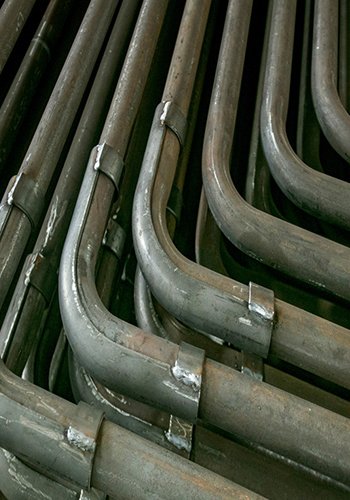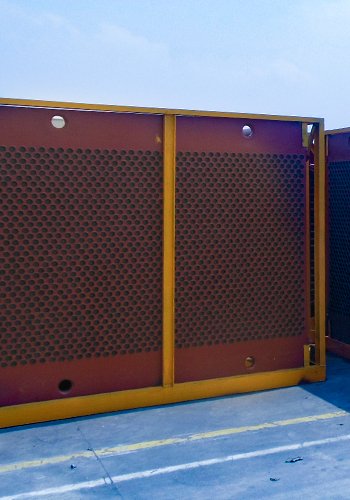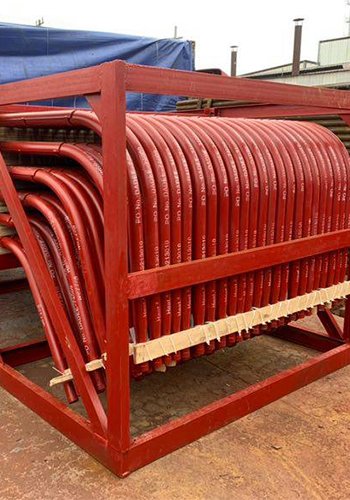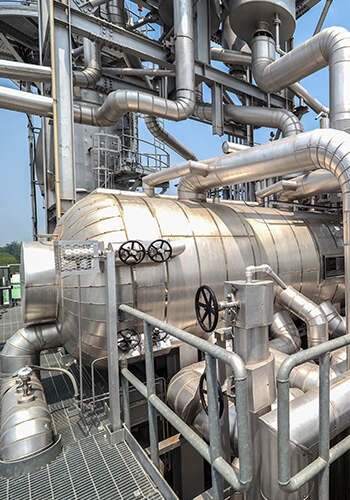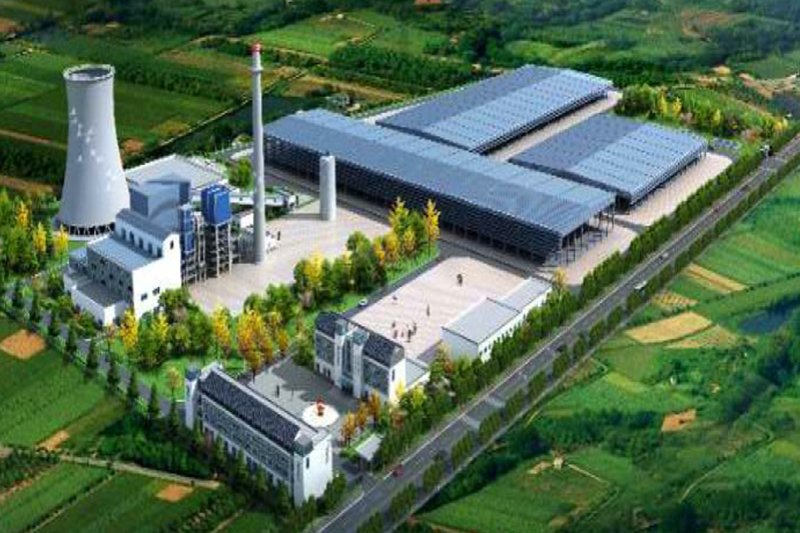Optimizing Waste Heat Boiler Wastewater for Sustainable Water Use
The wastewater generated by the waste heat power generation system supporting the cement line is categorized into industrial and domestic wastewater. Notably, industrial wastewater stems from various sources, including circulating water cooling tower sewage, waste heat boiler sewage, chemical water treatment sewage, and sparging tanks, among others. To maximize water resource efficiency, the wastewater from waste heat boilers is systematically collected. This reclaimed water is then strategically utilized for replenishing the cooling towers in both the cement line and power plant. Additionally, it serves as a valuable resource for daily road spraying and vehicle washing at the plant’s entrance and exit points.
In the wake of economic development and population growth, the global demand for water resources has risen substantially. However, due to irrational exploitation and utilization, many countries and regions are grappling with varying degrees of water shortages, a phenomenon commonly referred to as water scarcity.
The cement industry, known for its high energy consumption, is also a major water consumer. In China, numerous cement factories face water supply challenges, leading to the discharge of substantial wastewater during cement production, thereby causing environmental pollution. In light of these challenges, adopting water conservation measures, optimizing water resource utilization, and minimizing wastewater discharge have become imperative choices for cement factories aiming to enhance efficiency and achieve sustainable development.
Addressing the escalating water scarcity issue, various domestic and international cement production facilities have embarked on waste heat power generation projects. These initiatives have yielded positive results, effectively addressing water shortages while simultaneously reducing operational water costs, thus creating a win-win scenario. This article will briefly examine the key process design concepts employed in successful projects that focus on recycling and reusing wastewater through cement line-supported waste heat power generation systems.
Wastewater Sources in the Cement Line Auxiliary Waste Heat Power Generation System
The wastewater generated by the cement line auxiliary waste heat power generation system primarily falls into two categories: industrial wastewater and domestic wastewater. Industrial wastewater constitutes a significant portion, comprising approximately 85% to 90% of the total wastewater. The primary contributors to industrial wastewater include circulating water cooling sewage, waste heat boiler wastewater, chemical water treatment wastewater, as well as sparging tank and injection tank wastewater.
1.1 Industrial Wastewater
The largest contributor to wastewater in the cement line auxiliary waste heat power generation system is industrial wastewater. This category includes:
- Circulating Water Cooling Tower Wastewater: Originating from daily sewage and instances where the cooling tower water quality fails to meet standards even with dosing adjustments during maintenance or replacement.
- Waste Heat Boiler Wastewater: Generated through scheduled daily and continuous discharges, as well as during boiler maintenance.
- Chemical Water Treatment Wastewater: Arising from the discharge of concentrated water and backwash from RO membranes, backwash from quartz sand and activated carbon filters, and the regeneration of mixed ion exchangers.
- Sparging Tank and Injection Tank Wastewater: Primarily from daily discharge and backwash.
1.2 Domestic Wastewater
While domestic wastewater is present, its proportion is comparatively smaller than industrial wastewater. It encompasses water tank sewage, originating from daily discharge and backwash, as well as water tank discharge, which occurs during daily sewage and waste heat power generation system startup warming furnace. Additionally, injection tank discharge contributes significantly, stemming from daily sewage and instances where anomalies necessitate enhanced vacuum levels, leading to substantial water discharge.
Sustainable Wastewater Reuse in Cement Line Waste Heat Power Generation with Waste Heat Boiler Focus
Traditional methods of wastewater collection involve channeling all wastewater to the blending tank. The water quality in the blending tank is then adjusted based on operational variations by incorporating suitable scale inhibitors and biocides. The goal is to meet specific effluent water quality indicators:
- Total Hardness: 117 mg/L to CaCO3
- pH: 7.3 to 8.0
- Turbidity: 28 to 30 mg/L
- Temperature: 30 to 32 ℃
- COD: 50 to 65 mg/L
- BOD5: 8 to 10 mg/L
Cooling Water Quality Requirements:
- Conductivity: <1,000 μs/cm
- Suspended Solids: <20 mg/L
- pH: 6.5 to 9.5
- Total Hardness: <250 mg/L in terms of CaCO3
Wastewater meeting these specifications can be efficiently pumped, pressurized, and transported to cement production equipment or the power station for use as circulating cooling water. Additionally, the treated water finds application in various secondary uses, such as vehicle washing at entry and exit points, plant pavement spraying, and the greening of the plant area. Table 1 provides a detailed overview of the monitoring results, ensuring compliance with the established quality standards.
| Sampling location or Sample Name | Monitoring Projects | |||
| pH | COD | SS | BOD5 | |
| Cooling tower discharge | 7.5 | 45 | 25 | 5.6 |
| Boiler effluent | 7.2 | 15 | 16.2 | 1.4 |
| Neutralization water | 7.3 | 56 | 28.4 | 8.8 |
| Drainage tank discharge | 7.2 | 10 | 15 | 1.2 |
| Injection tank sewage | 7.6 | 18.9 | 16 | 3.0 |
Enhanced Collection Method: Categorized Collection for Improved Efficiency
A more efficient approach to wastewater collection involves the implementation of a categorized collection method. In this method:
Injection Tank Overflow:
- Industrial water applied to the overflow of the injection tank serves the specific purpose of reducing the injection tank temperature to enhance turbine vacuum. This water, having similar quality to input industrial water, can be directly collected as power station circulating water. Often, a new medium water tank and pump are added to collect the overflow, transferring it back to the circulating pool as supplementary water for the cooling tower.
Boiler Sewage:
- In the collection process, boiler sewage, discharged at high temperatures, necessitates a cooling well to bring its temperature down to room temperature. This prevents adverse effects on the water quality of other wastewater, and the cooling process facilitates the precipitation of a small portion of sediment.
Unified Treatment:
- Sewage from evacuation tanks, boiler sewage, neutralization pools, and cooling towers can be pooled together based on the actual situation. After regulation and the addition of appropriate treatment chemicals, they undergo unified treatment.
Domestic Sewage:
- Domestic sewage discharge requires treatment through a non-powered maintenance-free domestic sewage processor before being released. This categorized treatment approach not only minimizes losses but also promotes energy efficiency.
Example from a 6 MW Waste Heat Power Generation Project:
- Daily wastewater quantities: Circulating cooling tower (45 t/h), two waste heat boilers (approximately 0.7 t/h each), chemical water treatment wastewater (about 1.5 t/h), hydrophobic water (about 1 t/h), and industrial wastewater from injection tank cooling (about 30 t/h).
- Cumulative total daily wastewater: 78.5 t/h (refer to Fig. 1 for details).
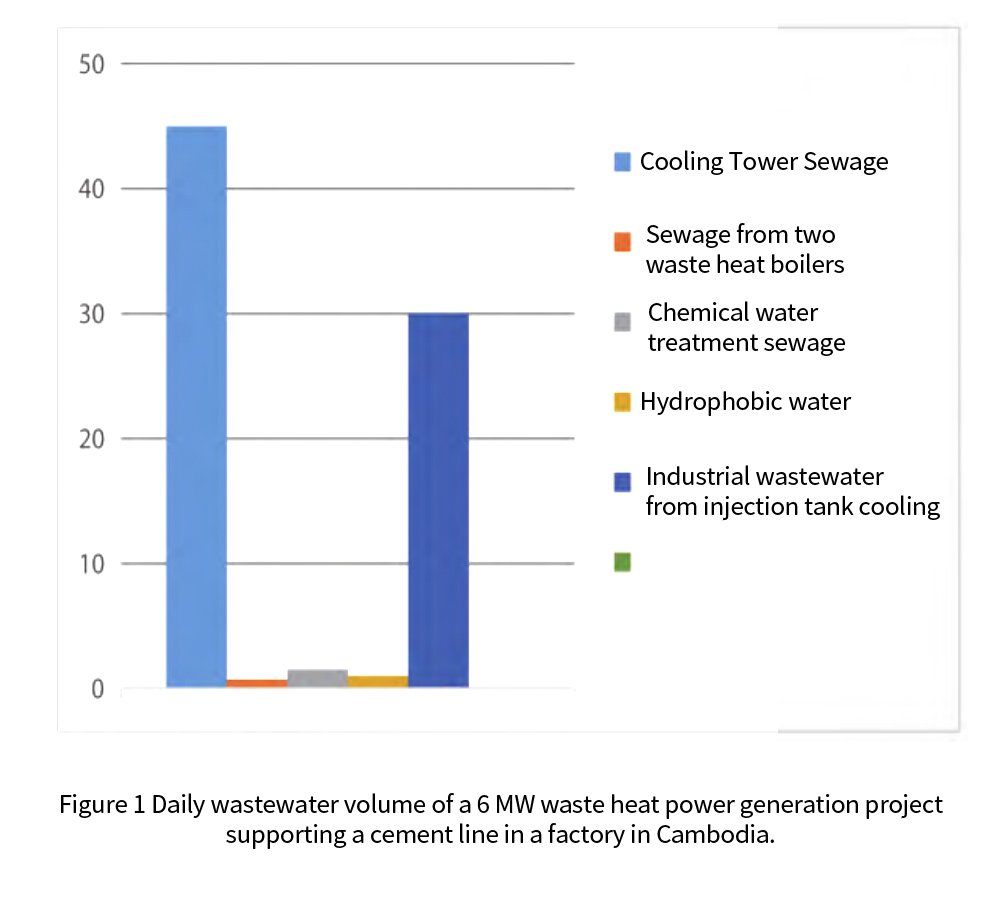
Wastewater Management under Emergency and Special Circumstances
In cases of emergencies or special circumstances, the volume of wastewater significantly increases. For instance:
- Cooling Tower Overhaul: Approximately 950 t of wastewater is generated during a one-time replacement of the cooling tower during overhaul.
- Waste Heat Boilers Overhaul: One-time replacement of two waste heat boilers during overhaul results in about 70 t of wastewater.
- Hydrophobic Water: About 48 t of wastewater is produced as hydrophobic water.
- Water Jetting Tanks Cooling: Cooling water for water jetting tanks can accumulate to about 1,200 t of wastewater.
These substantial amounts of wastewater, especially during unfavorable circumstances, pose a significant challenge. In Cambodia, which experiences a tropical monsoon climate with an average annual temperature of 29-30 ℃, measures are crucial to address water scarcity during the dry season. The NJSCPC has implemented key initiatives, including the construction of a 1,000-meter blending pond and the digging of approximately 17 wells around the plant, alleviating water shortage concerns.
Handling Injection Tank Overflow:
- The overflow from the injection tank primarily consists of industrial water. This wastewater, originating from the injection tank system, requires special attention due to the mixture of air and water vapor extracted from the condenser. Regularly adding cold water to the injection pool and discharging hot water helps maintain a low temperature. Nanjing SIP Cement Engineering Group Co., Ltd. has introduced a middle water tank and pump system to efficiently collect and transport this wastewater back to the circulating water tank. This approach not only optimizes the economical reuse of injection tank wastewater but also reduces the need for additional supplementation to the circulating water tank, achieving dual benefits of water and energy savings, especially crucial during Cambodia’s dry season water shortage.
Handling Remaining Wastewater:
- The remaining wastewater, including cooling tower wastewater, two waste heat boiler wastewater, chemical water treatment workshop wastewater, and hydrophobic water (totaling about 48.5 t/h), undergoes dosing and other processes. Due to fluctuating dosing amounts and original treatment discharge, this wastewater’s quality can be challenging to manage. To address this, wastewater collected from the cement line is combined with centralized collection to a blending plant with a 1,000 m capacity.
Contingency Measures:
- To address the most unfavorable contingencies, such as operational fluctuations leading to increased temperatures in the injection tank, excess injection tank overflow can be directed to the water tank and well pump, ensuring direct feeding into the cooling pool for water replenishment. Additionally, wastewater generated during cooling tower and waste heat boiler overhauls, along with emergency hydrophobic water, is collected in the 1,000 m reconciliation pool. After dosing based on daily test results, the treated water can be recycled for various purposes, including power station cooling tower supplementation, cement line cooling pool supplementation, humidifying tower spray water, plant area greening, and entrance car washing device water.
Conclusion: Toward a Resource-Saving Society
The aspiration to build a resource-saving society is a shared global objective, and our country has been actively pursuing this goal. The effective utilization of “waste heat and vapor” to mitigate economic costs and contribute to environmental sustainability is at the forefront of waste heat recovery projects.
Waste heat recovery engineering represents a significant stride toward environmental development. Within this framework, the utilization of wastewater in waste heat power generation systems, often employed as a water-based medium, stands out as a pivotal means to harness the potential of “waste heat.” Implementing recycling measures tailored to local conditions maximizes water resource utilization. The real-world case of Nanjing SIP Cement Engineering Group Co., Ltd. in the Cambodia project exemplifies how adopting such measures not only addresses the critical water shortage crisis during the dry season but also curtails wastewater discharge. This holistic approach has yielded substantial economic and environmental benefits, underscoring the positive impact of water resource reuse in waste heat recovery projects.
DHB Boiler
Discover The Superior Quality And Cutting-Edge Technology Of DHB Boilers. Explore Our Range Of Biomass Boilers, Waste Heat Boilers, And More. Take Your Industrial Operations To New Heights With DHB Boiler.
